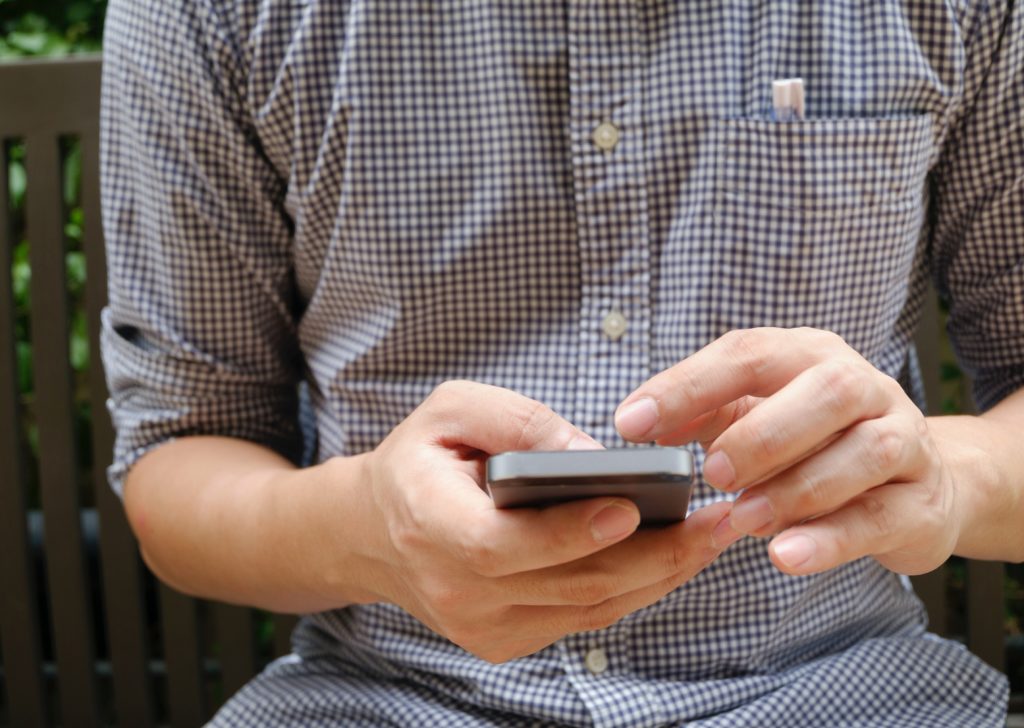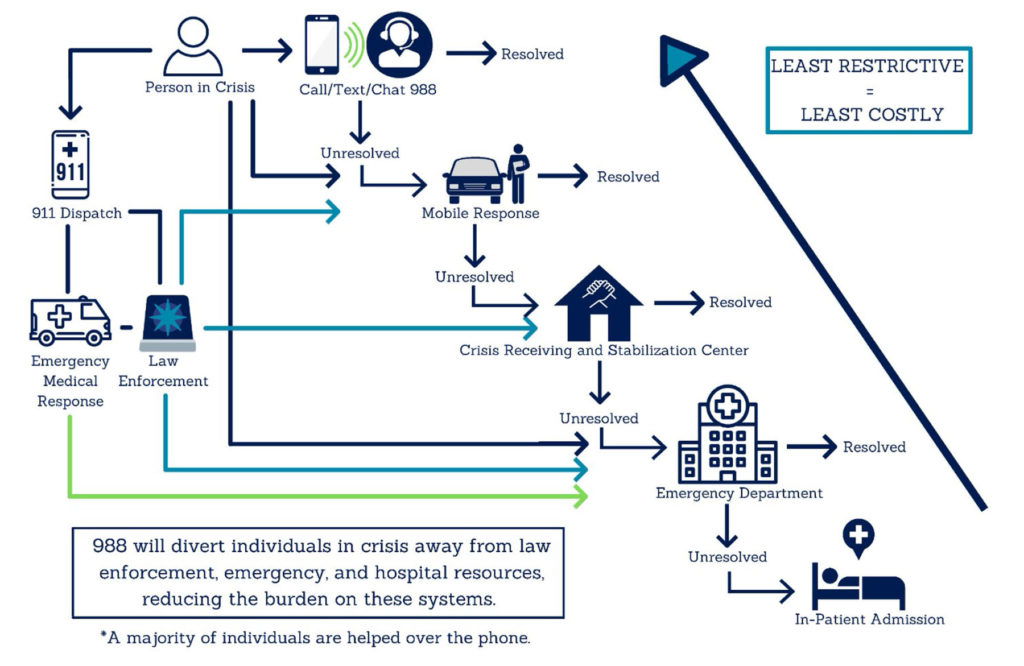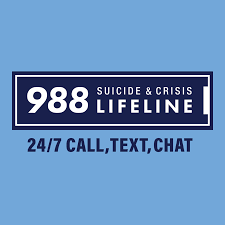With Suicide Prevention month coming up in September, we are excited to discuss a public policy advancement in suicide and crisis intervention. In April, at Meeting of the Minds, many of us had the privilege of attending a discussion around the national change from the previous 1-800 number for the Suicide Prevention Lifeline. This change is designed to make mental health crisis care more accessible, easier to remember, and use several fiscal and human capital resources more efficiently. That change is known as 988.
How Did This Happen?
In July 2020, while the world was reeling from the beginning of the COVID-19 pandemic, the Federal Communications Commission (FCC) approved the shorter, more easily memorized “988” as the new number for the National Suicide & Crisis Lifeline. Within two years, telecommunication companies were instructed to make the changes necessary to make sure 988 would be accessible to all users via call, text, or chat services at https://988lifeline.org
Why Make the Change?
As mentioned, 988 is easier to remember than the previous 1-800 number, a valuable asset for someone facing a mental health crisis. However, this more focused and streamlined approach is not just about remembering a phone number. Instead, the entire process previously followed during a mental health crisis was recognized as being inefficient.
For far too long, most people in a mental health crisis had few options, often needing to call law enforcement and wait at a hospital for an assessment. Despite hospital best efforts, this process would often take hours while the person in crisis sat awaiting treatment, and law enforcement officers could not return to their duties.

So, How is 988 Different?
When a person calls 988, they are connected to a local* suicide prevention specialist trained to help navigate a “no wrong door integrated crisis system” of care. Depending on the crisis, this may include someone to talk to, someone to respond, and/or somewhere to go. In Missouri, rather than being taken directly to the hospital, the following options are now potentially available:

As seen in the graphic, there are now many more options for someone facing a mental health crisis. This helps access the level of care needed and provides an exit when the crisis is resolved. Missouri’s framework includes six mental health care systems to cover different areas of the state, allowing public safety and medical emergency personnel to return to dispatching emergencies as needed.
A Few Additional Notes
- While 988 is designed to improve crisis services and effective levels of care, 911 is still available for mental health emergencies that are at the point of being medical emergencies.
- *Full integration with geolocation has not been achieved yet. If someone calls 988 in Missouri, they are likely to be connected to someone local, but it is possible to speak with someone in the National Backup Network. This is an effort in progress.
- While Missouri is moving ahead with this effort, not all states were ready for the transition. The expected national rollout of 988 information is December 2022 or January 2023.
While the change sounds like just a number, the gift in 988 is the increased resources, access points, and exits available to those facing a mental health crisis. With these advancements, 988 aims to improve community response to behavioral health, make accessing mental health care easier, less intimidating, and less costly, and reduce the burdens that have previously existed for emergency personnel and those in crisis who had few options.

988 Resources
988 Suicide and Crisis Lifeline
SAMHSA 988 Partner Tool Kit (includes key messages, FAQs, printables, shareables, etc.)
988 FAQ Document for PIP Campuses
988 Information from the Missouri Department of Mental Health
August 30, 2022. By Anne Rulo, Author, Speaker, Therapist. www.annerulo.com. FB/IG/Twitter @annemrulo
